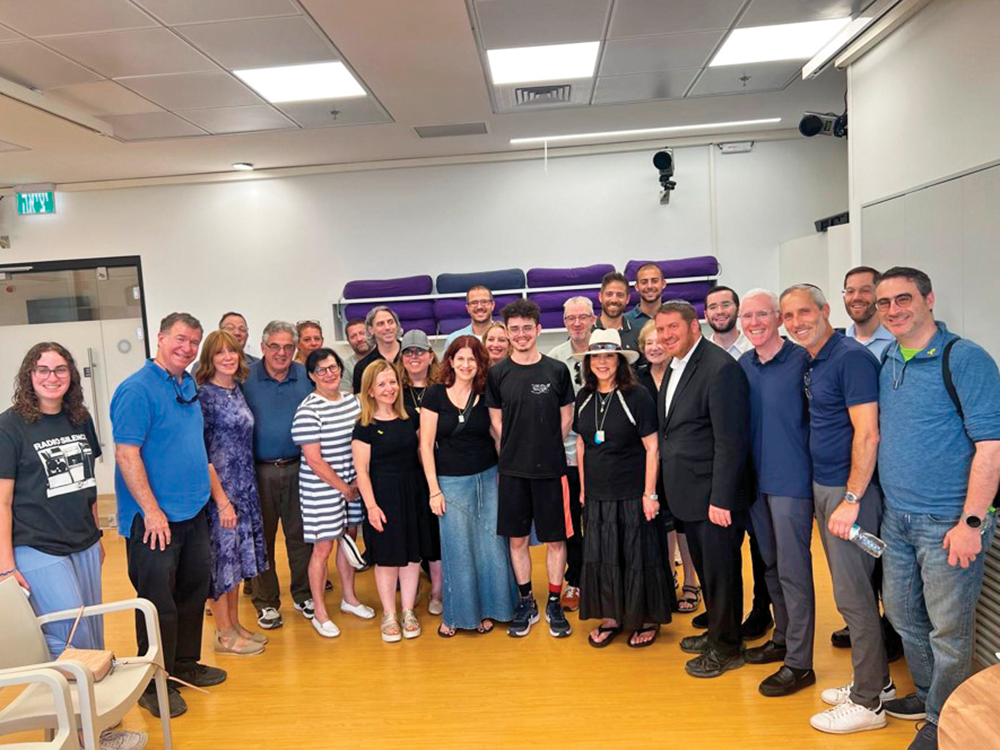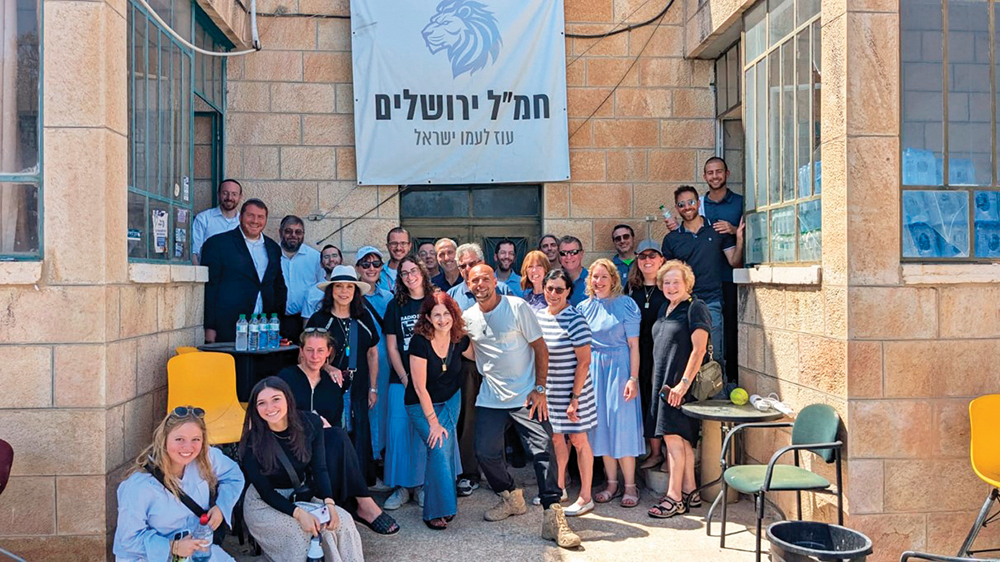
Location, Location, Location
One of the brutally attacked locations on Oct. 7 was the Kibbutz Kerem Shalom. The Bergen community adopted Kerem Shalom as a sister community during its first mission. While the families have not yet returned to living there, we visited the site of Kerem Shalom during this second mission along with some of their members. News reports that told of the horrific attack there on Oct. 7 described it as near the southern Gaza border, close to the Egyptian border.
That description is certainly accurate, but woefully deficient in giving a sense of how uniquely centrally it is located to the eye of this historic storm. There are high walls surrounding Kerem Shalom which were breached on Oct. 7 with blasts that resulted in openings in the walls. We learned that the Kerem Shalom perimeter comes within 40 meters of both Gaza and Egypt. Forty meters may sound different to different people. Personally, I could not believe it. The current nexus of world news is home to a kibbutz whose property “touches” Gaza and Egypt. To see is to believe, so I went up a stairway on the wall leading to a lookout window. I could have thrown a ball into either Gaza or Egypt. It would be quite reasonable to argue that this was the most precarious piece of real estate in the world. Who would want to live there?
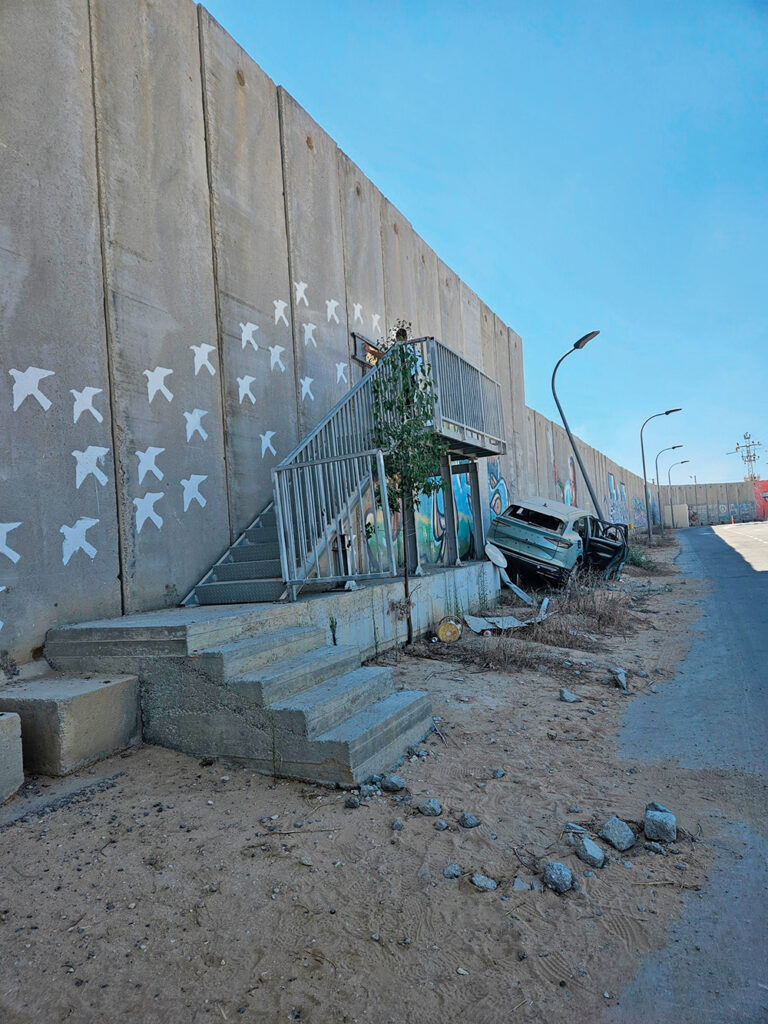
Who Are These People?
While at the Kerem Shalom site we were brought to the scene of the horrific Oct. 7 events by some of the residents. Some of the stories we have all heard pieces of were now told to us in great detail by those involved, at the very locations they transpired. We heard a middle-aged resident, standing on the road where he encountered terrorists on Oct. 7, describe the details of that confrontation. He was shot at by terrorists wearing Israeli army uniforms and initially, sought confirmation that they weren’t “friendly fire.”
He started crying as he told us that in the middle of the most intense stage of this combat, he received a phone call from his father who had heard news of war activities in the area and wanted to know if he was OK. Not wanting to worry his father, he said he was fine — and then continued to fight off the terrorists. We next went to the shelter room in one of the homes at Kerem Shalom. We saw where a mother and her six children had huddled in a corner while the father held the door closed to keep the terrorists out. The terrorists ultimately bombed open the door with a grenade, resulting in this father losing the major parts of both his arms. Another young father was shot and killed by terrorists as he was running to provide aid.
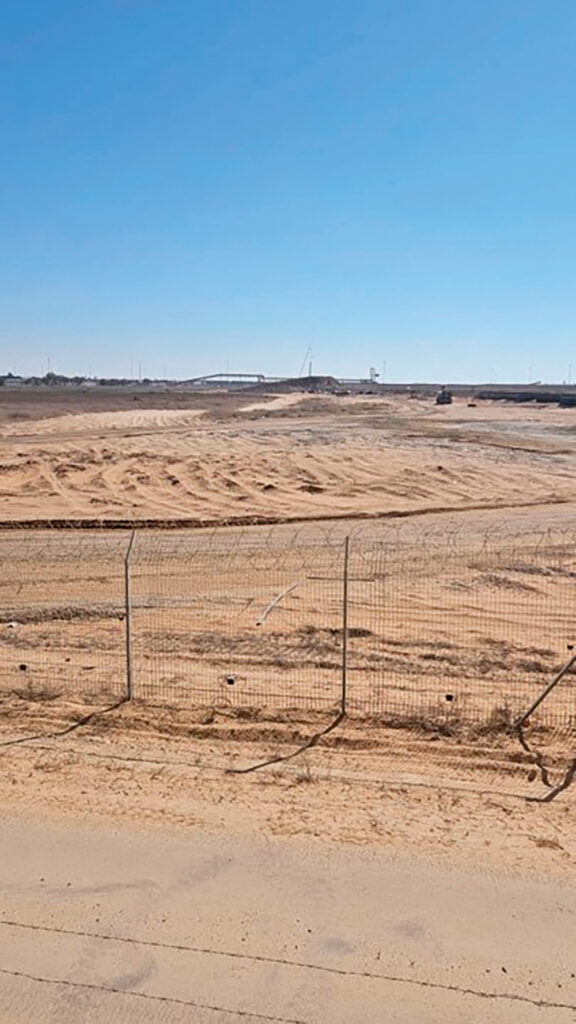
Ten months after these and other horrible events, we had the good fortune to spend time with the Kerem Shalom community. Kerem means vineyard. During our visit we joined them at the opening ceremony to start again to plant their vineyards. We planted seedling trees together and watched as the mother of the young father who was killed planted. Beside her was her mother — a Holocaust survivor. So much Jewish history unfolded before us! I was shocked when this Holocaust survivor thanked us! The community was grateful for our presence and support and I was awed and confused by this mindset.
Over the course of our visit we spent time with them as they and their children laughed and danced in their temporary homes, anxiously waiting to return to their true homes. We watched the father who lost his arms now ushering, with one prosthetic arm, his young children. As we spent time with them, I kept thinking how surprised I was by who they are. I believe I, and most others, would have expected something quite different from a community living at the focal point of current events. I might have imagined hard-core rebel rousers, military, combative people.
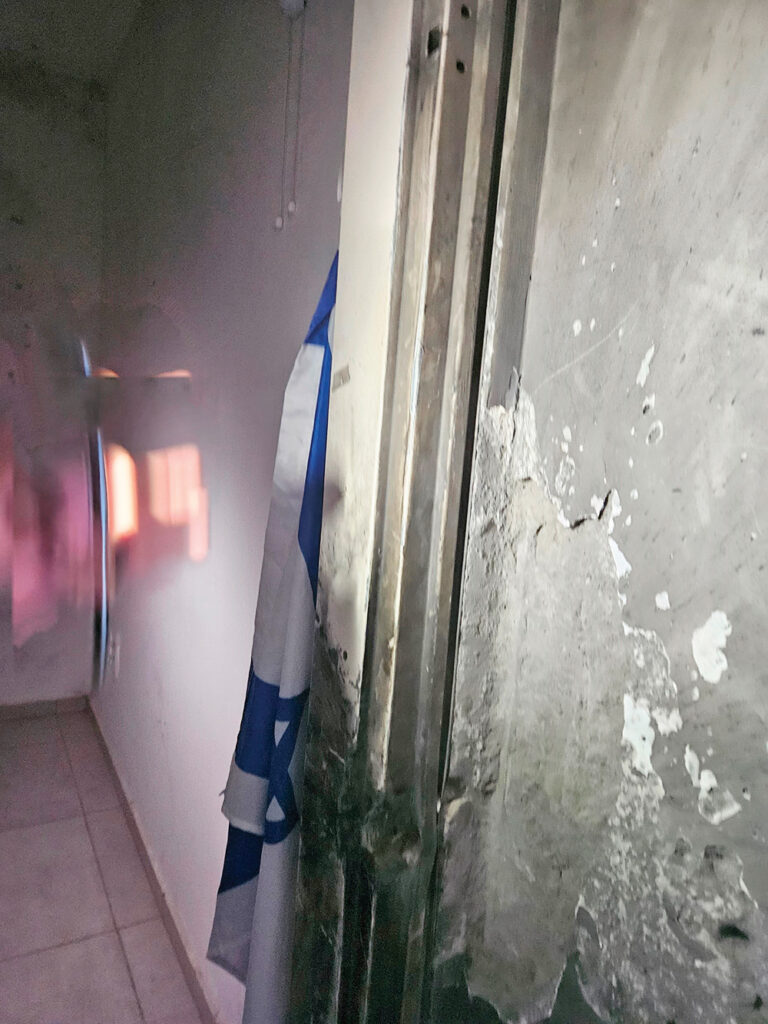
What we saw was a community of sweet, loving people. A warm mixture of religious and non-religious people. People who loved their children and each other. Children who were constantly thrilled to play with each other. People we felt we could envision and love to have as our own family. People who were filled with intense gratitude for the simplest things. Most importantly, they exemplified the spirit, strength and fortitude of the Israeli people.
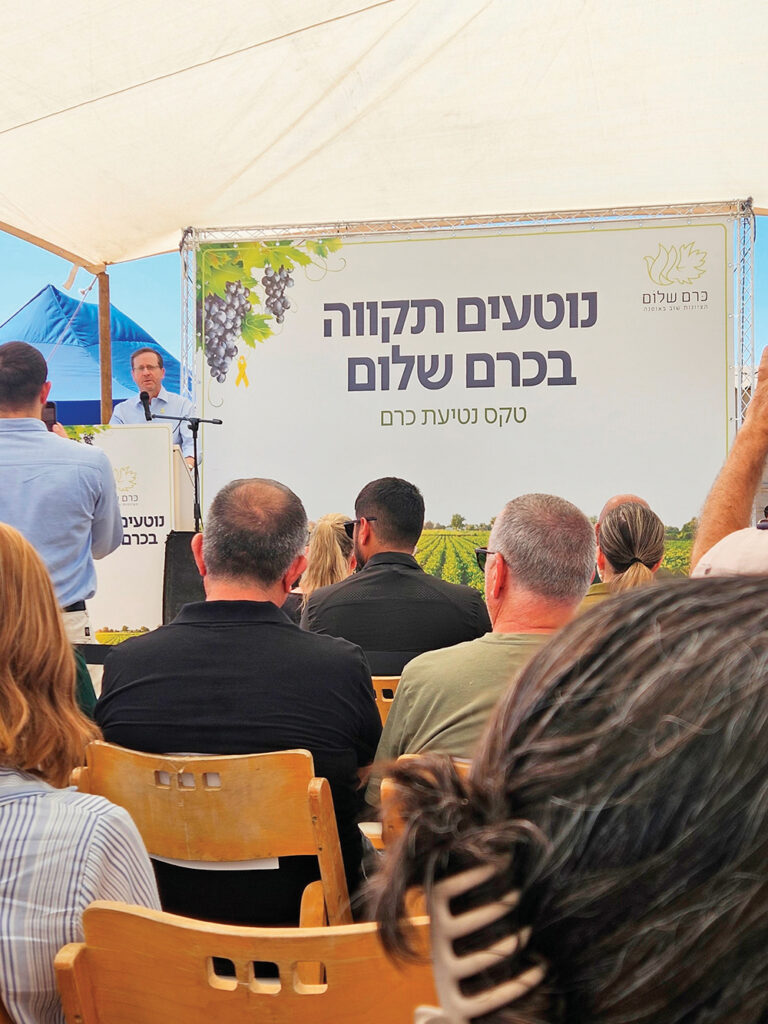
Am Yisrael Chai: What Does It Mean?
By the fourth day of our mission, we had already seen and heard numerous stories that had extracted our deepest emotions at all ends of the spectrum. On this day we were taken to what had been billed as a bikur cholim stop at a Hadassah Hospital facility. We were first given a tour of a newly opened full-service rehab center covering the entire spectrum (physical, psychological, long- and short-term needs) of rehab.
We were then shown a brand-new, heavily fortified and hidden underground, state-of-the-art emergency hospital facility. Described as the safest place in Israel, it was created in response to the Oct. 7 attack to ensure the ability to react to any unexpected future crisis, aptly dubbed the “God Forbid Hospital.” With that entree to our bikur cholim stop, we were brought into a room with a few chairs up front. A young man with a smile on his face slowly walked in and sat up front. The hospital’s host asked him to share his story. I, and perhaps the rest of us, didn’t realize that this now healthy looking young man was the choleh. He smiled (as he did throughout our time with him) and began to tell his story. He was involved in the terror attack this past February near the checkpoint going from Ma’ale Adumim to Jerusalem. He is 23 and had recently finished two tours of duty in Gaza. He was back living in Ma’ale Adumim and was being driven by his mother to his third day of his new job as a security guard.

Sitting in line at the checkpoint a terrorist suddenly appeared and began shooting into their front window with an M16. He quickly struggled to get out a pistol to start returning fire. His mother and he emerged from the car in the course of this encounter. The young man described in detail the harrowing exchange between himself and the terrorists. It was what you might imagine in a Tom Cruise action film scene— but here was this smiling young man telling us what he experienced. We listened to a blow-by-blow description of what we had all heard about months earlier, simply as an exchange at an intersection with people injured and killed and terrorists neutralized. In the course of “neutralizing” terrorists, he was shot in the abdomen and femur.
After six months he had finally recovered enough to be released for outpatient care. During the presentation a couple on the mission reported knowing a family who were on the line waiting at the checkpoint on that day. They thanked the young man for saving their friends’ lives. Like this story, much of what we heard and saw on this trip was literally jaw-dropping. At the same time, his smile throughout his discussion was perhaps the most amazing element. He was happy, hopeful and optimistic. While the stories we heard were varied in specifics, that positive spirit that radiated from everyone we met was pervasive and compelling. Yes, Am Yisrael Chai means Am Yisrael lives and survives. But it means much more. It means Am Yisrael “is life.” It means Am Yisrael “lives” into the next day. It means Am Yisrael thrives.
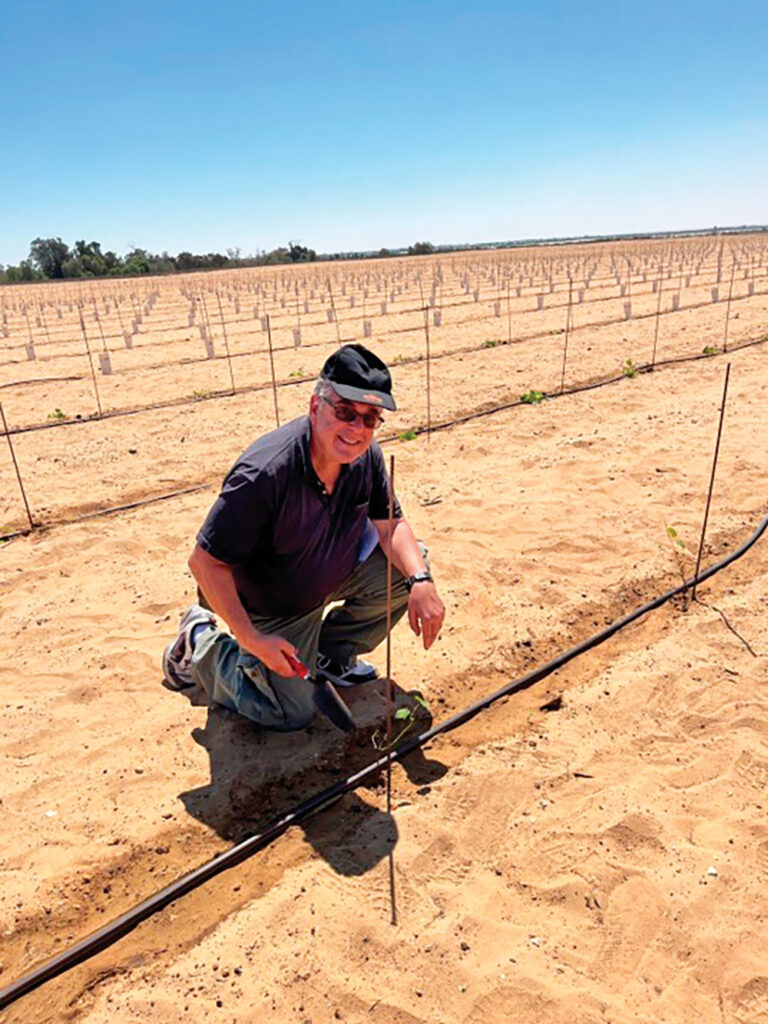
What Would You Do?
On an ongoing basis, our mission felt like we were being transported through space and time into the most shocking headlines in the news since Oct. 7. It was as if we were being sucked into the sites of the newscasts which have entered our collective dreams and nightmares. The world was horrified when we heard how Hamas had killed and decapitated an Israeli soldier and tried to sell his head in Gaza. This story is so difficult to hear or understand. How deeply depraved can people be? If this soldier were a member of your family, how would you react? How would you go on? What would you do?
Here is one person’s answer. Our mission volunteered to work one morning at Har Choma Chamal preparing Shabbat food for soldiers impacted by the war. Upon our arrival, we were told how and why this effort began by its inspirational organizer. This was his way to help our soldiers and he now works at it endlessly. Who is he? He is the father of the soldier who had suffered this savagery. He spoke calmly, boldly and passionately about his love for the land and for our soldiers. As a father and grandfather, I cannot fathom what he does or how. He capped off his talk by thanking us! He sincerely felt grateful to us for our expressions of support. It is downright bizarre and extraordinarily humbling to have him flip the feelings of gratitude to us. Yet during the course of our mission, this was a recurring theme.
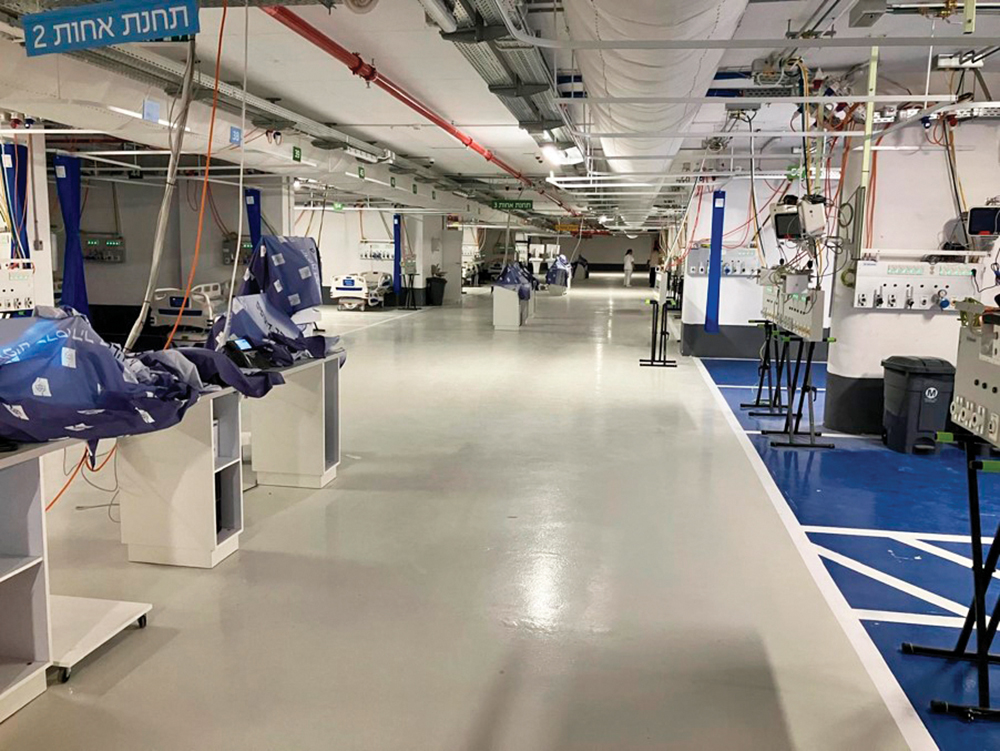
Over the course of our four-day mission we saw brave yet remarkably humble people who are so grateful for what they do have and for any and all of the support they receive.
Sid Topiol is a resident of Fair Lawn.
